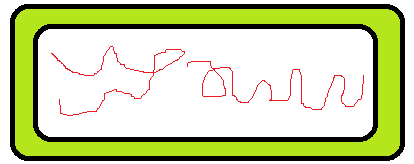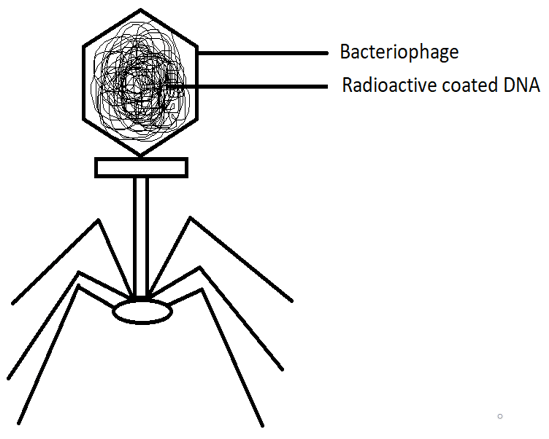This set of Class 12 Biology Chapter 6 Multiple Choice Questions & Answers (MCQs) focuses on “The Genetic Material is DNA”.
1. What are the viruses that affect bacteria known as?
a) Virophage
b) Bacteriophage
c) Mimivirus
d) Virology
View Answer
Explanation: The viruses that affect bacteria are known as bacteriophage. They have the capability to both enter the bacterium and reproduce inside them. Alfred Hershey and Martha Chase worked with these kinds of viruses.
2. Who proved that DNA was indeed the genetic material through experiments?
a) Alfred Hershey and Maclyn McCarty
b) Oswald Avery and Maclyn McCarty
c) Oswald Avery and Martha Chase
d) Alfred Hershey and Martha Chase
View Answer
Explanation: Alfred Hershey and Martha Chase in the year of 1952 proved that DNA was the genetic material through experiments. They worked with bacteriophages. Oswald Avery and Maclyn McCarty helping in the determination of the biochemical natures from Griffith’s experiment with regards to the “transforming principle”.
3. The bacteria treats the attached viral particle’s (bacteriophage) genetic material as its own.
a) True
b) False
View Answer
Explanation: The bacteriophage comes and attaches itself onto the top of the bacterial cell wall. After attachment, the virus makes contact with the bacterial cell wall and tries to inject its genetic material (DNA or RNA) into the bacteria. The bacteria will consider the viral genetic material to be as its own and will not do anything.
4. On which medium were the viruses cultivated by Alfred Hershey and Martha Chase?
a) A medium containing radioactive potassium (K)
b) A medium containing radioactive Uranium (U)
c) A medium containing radioactive phosphorous (P)
d) A medium containing potassium (K)
View Answer
Explanation: Alfred Hershey and Martha Chase wanted to figure out whether it was the protein from the bacteriophage that was entering into the bacteria or if it was the DNA. So, they cultured the bacteriophage in a medium containing radioactive phosphorous. In this medium they observed that the radioactive DNA was present in the virus but not the radioactive protein. This is because, protein doesn’t contain phosphorous but on the contrary, the DNA does.
5. When the viruses are cultivated in the medium containing radioactive Sulphur, then these viruses possess radioactive DNA but not radioactive protein.
a) True
b) False
View Answer
Explanation: DNA doesn’t contain Sulphur whereas protein does. So, when the virus is placed in the culture medium containing radioactive Sulphur, radioactive protein is produced and not the radioactive DNA. This is due to the presence of Sulphur in proteins.
6. The virus infected bacterium which contains radioactive proteins are not radioactive.
a) True
b) False
View Answer
Explanation: The virus infected bacterium which contains the radioactive DNA, were observed to be radioactive in lab experiments. But this was not the case for the ones that had the radioactive protein in them. From this, it could be inferred that the protein molecules did not enter the bacterium but only DNA molecules did. The genetic material that is passed on from the virus to bacterium is the DNA.
7. Which of the following is not a stage in the “Hershey-Chase experiment”?
a) Blending
b) Centrifugation
c) Infection
d) Conjugation
View Answer
Explanation: Infection is the first stage where the viral particle attaches itself to the bacterial coat and starts to inject its genetic material inside of it. Blending is the second stage where the viral coats were removed from the bacterium by the act of “blending”. Centrifugation is the third stage where the viral particles are centrifuged from the bacterium by spinning.
8. Which stage is depicted in the picture given below from the “Hershey-Chase experiment”?

a) Infection
b) Blending
c) Centrifugation
d) Injection
View Answer
Explanation: The viral particle leaves the bacterium in a centrifuge by a spinning movement. It will not be attached to the bacterium in this stage. The passing on of the genetic material will not occur or happen during this stage of centrifugation.
9. What will happen when the radioactive DNA is injected into the bacterium?

a) Non-radioactive DNA components could be found
b) Radioactive DNA components could be found
c) Non-radioactive RNA components could be found
d) Radioactive RNA components could be found
View Answer
Explanation: When the radioactive coated DNA (genetic component) is injected into a bacterium. Radioactive DNA components can be seen after the three stages such as:
• Infection
• Blending
• Centrifugation
This is observed because DNA is the component that is being transferred from the virus to the bacterium and not the protein.
10. Which of the following can be observed alongside with radioactive bacterium as a result of centrifugation?
a) Bacterium starts to produce RNA
b) Radioactivity can be detected in the supernatant
c) Bacterium starts to move slow
d) Radioactivity cannot be detected in the supernatant
View Answer
Explanation: As a result of the process of centrifugation, a radioactive bacterium will be produced. The virus attached to the bacterium will leave during the process of blending. It will leave after injecting the radioactive material inside the bacterium. So, radioactivity will not be detected in the supernatant.
11. What will happen when the radioactive protein capsule of the virus is attached onto the bacteria?
a) Radioactivity is detected in the supernatant
b) Radioactivity is absent in the supernatant
c) Radioactive DNA is injected into the bacterium
d) Attachment of the virus to the bacterium doesn’t occur
View Answer
Explanation: The virus attaches itself to the bacterium having a radioactive protein capsule. The transfer of DNA alone occurs between the virus and bacteria. The protein capsule or any of its parts is not involved in the process. So, radioactivity can be observed in the supernatant after the centrifugation stage.
Sanfoundry Global Education & Learning Series – Biology – Class 12.
To practice all chapters and topics of class 12 Biology, here is complete set of 1000+ Multiple Choice Questions and Answers.
If you find a mistake in question / option / answer, kindly take a screenshot and email to [email protected]
- Practice Class 12 - Mathematics MCQs
- Practice Class 12 - Physics MCQs
- Practice Class 12 - Chemistry MCQs
- Practice Class 11 - Biology MCQs
- Check Class 12 - Biology Books
